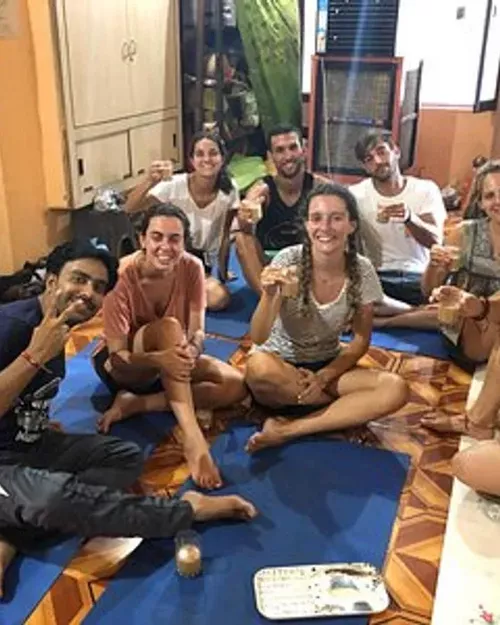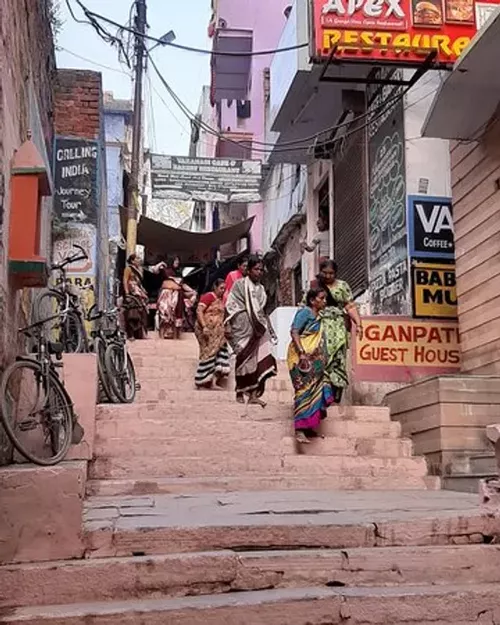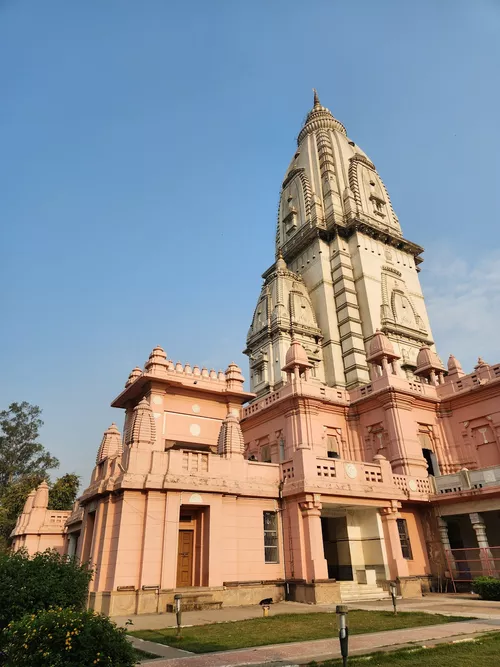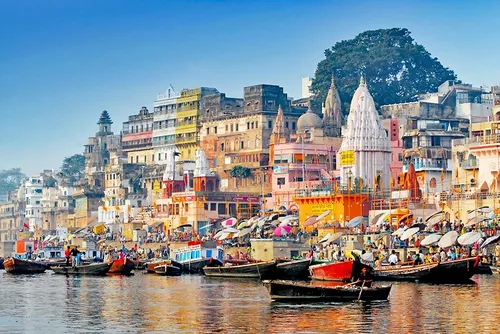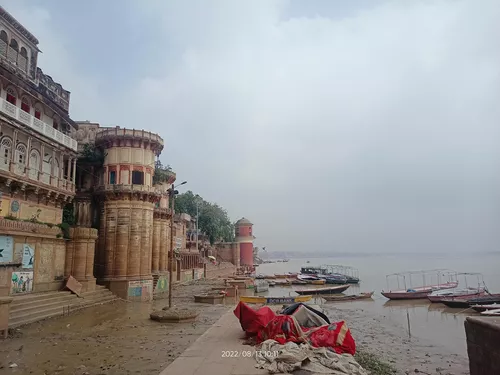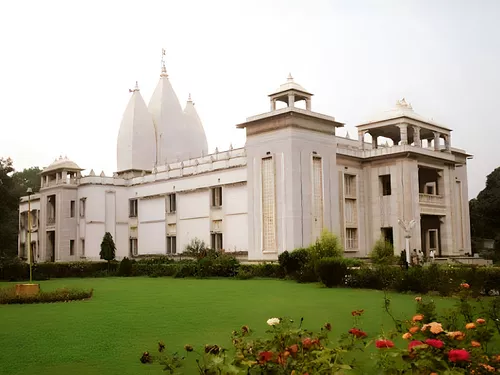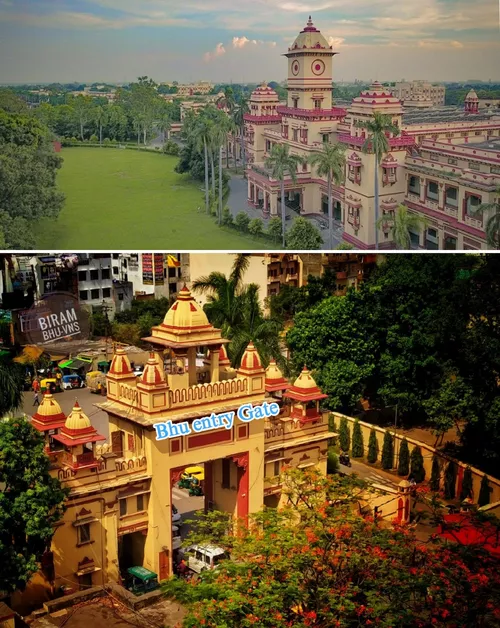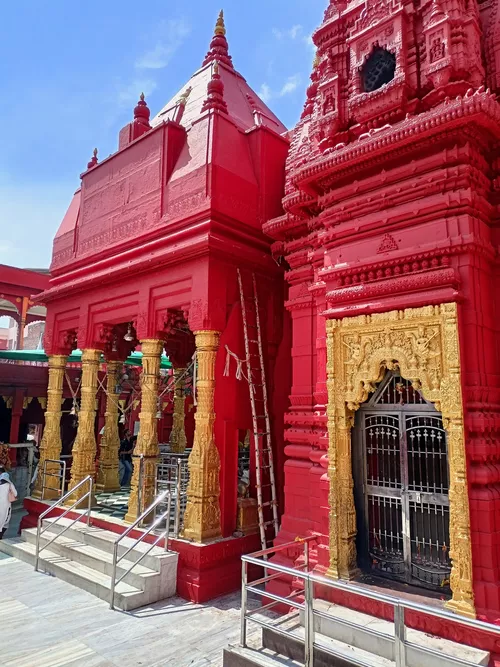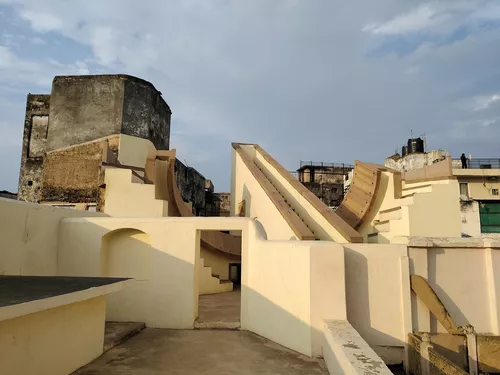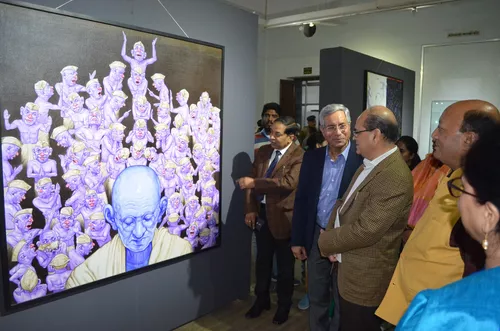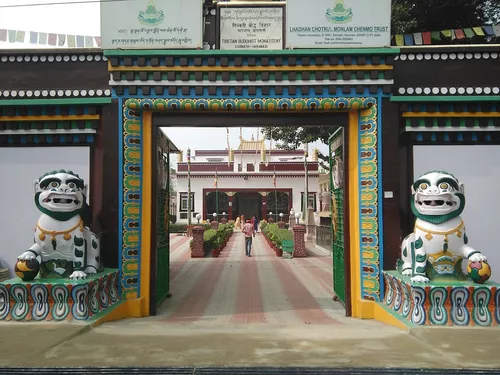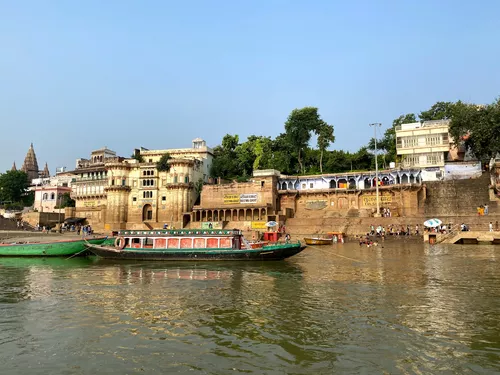Varanasi is popular for
Varanasi in next 3 month
Weather in Varanasi
April in Varanasi brings warmer temperatures with clear skies and slightly higher air pollution levels.
Usual trip duration
A 2-3 day trip to Varanasi allows you to explore the ancient city, visit the famous ghats along the Ganges River, witness the Ganga Aarti ceremony, and immerse yourself in the spiritual and cultural heritage of the region.
Budget friendly with affordable options
Ideas To Plan Your Trip
Places To Visit
Places To Eat
Frequently Asked Questions about Varanasi
The best time to visit Varanasi, the spiritual capital of India, is during the winter months, from October to March. The weather during this period is pleasant and ideal for exploring the ghats, temples, and other attractions. The temperature ranges from 5°C to 25°C, making it comfortable for sightseeing and boat rides on the Ganges. Avoid visiting during the summer months (April to June) as the heat can be intense, with temperatures often exceeding 40°C. The monsoon season (July to September) brings heavy rainfall, which can disrupt travel plans and make it difficult to navigate the city's narrow lanes. Therefore, planning your trip between October and March ensures a more enjoyable and fulfilling experience in Varanasi.
Varanasi is well-connected to the rest of India and the world through various modes of transportation. Here's a breakdown of how you can reach Varanasi:
| Mode of Transport | Details |
|---|---|
| By Air | Lal Bahadur Shastri International Airport (VNS) is well-connected to major Indian cities like Delhi, Mumbai, Kolkata, and Bangalore. Several airlines operate daily flights to and from Varanasi. From the airport, you can hire a taxi or take a pre-paid cab to reach your destination in the city. |
| By Train | Varanasi Junction (BSB) and Kashi Railway Station (BSB) are two major railway stations in the city. They are well-connected to major cities across India, including Delhi, Mumbai, Kolkata, Chennai, and Agra. Several express and superfast trains pass through Varanasi daily. From the railway station, you can hire a taxi, auto-rickshaw, or cycle-rickshaw to reach your hotel or other destinations. |
| By Road | Varanasi is well-connected by road to major cities in Uttar Pradesh and neighboring states. National highways connect Varanasi to cities like Allahabad, Lucknow, Patna, and Gorakhpur. You can take a bus from these cities or hire a taxi to reach Varanasi. Several private and state-run buses operate daily services to and from Varanasi. |
Varanasi, the spiritual heart of India, offers a plethora of attractions that cater to diverse interests. From ancient temples to serene ghats and bustling markets, there's something for everyone. Here's a list of must-visit places in Varanasi:
- Ghats of Varanasi: Witness the spiritual essence of Varanasi along the iconic ghats lining the Ganges. Dashashwamedh Ghat, Manikarnika Ghat, and Assi Ghat are among the most famous. Experience the Ganga Aarti ceremony at Dashashwamedh Ghat for a mesmerizing spectacle.
- Kashi Vishwanath Temple: Seek blessings at one of the most revered Hindu temples dedicated to Lord Shiva. The temple's gold-plated spire and intricate architecture are awe-inspiring.
- Sarnath: Explore the ancient Buddhist site where Lord Buddha delivered his first sermon after attaining enlightenment. Visit the Dhamek Stupa, Ashoka Pillar, and Archaeological Museum to delve into Buddhist history and art.
- Banaras Hindu University (BHU): Wander through the sprawling campus of one of India's oldest and largest universities. Visit the Bharat Kala Bhavan museum within BHU to admire its rich collection of Indian art and artifacts.
- Ramnagar Fort: Immerse yourself in the regal ambiance of this 17th-century fort located across the Ganges. The fort houses a museum showcasing vintage cars, royal costumes, and weapons.
Varanasi offers a diverse range of activities that cater to spiritual seekers, culture enthusiasts, and adventure lovers alike. Here are some of the most popular activities to enjoy in Varanasi:
- Boat Ride on the Ganges: Embark on a serene boat ride along the Ganges during sunrise or sunset to witness the mesmerizing beauty of the ghats and temples. Observe the rituals and ceremonies performed on the ghats as you glide along the sacred river.
- Attend the Ganga Aarti Ceremony: Witness the grandeur of the Ganga Aarti ceremony held every evening at Dashashwamedh Ghat. The synchronized movements of priests, the chanting of mantras, and the use of fire lamps create a captivating spiritual experience.
- Explore the Narrow Lanes of Varanasi: Get lost in the labyrinthine lanes of Varanasi and discover hidden temples, ancient houses, and vibrant markets. Interact with locals, sample street food, and soak in the authentic atmosphere of the city.
- Visit Sarnath: Take a day trip to Sarnath, the Buddhist pilgrimage site located a few kilometers from Varanasi. Explore the ruins of ancient monasteries, stupas, and temples, and learn about the life and teachings of Lord Buddha.
- Yoga and Meditation: Participate in yoga and meditation sessions offered at various ashrams and yoga centers in Varanasi. Rejuvenate your mind, body, and soul amidst the tranquil surroundings of the city.
Varanasi serves as a great base for exploring several nearby destinations that offer a mix of history, culture, and spirituality. Here are some popular places to visit from Varanasi:
| Destination | Approximate Distance | Highlights |
|---|---|---|
| Allahabad (Prayagraj) | 120 km | Triveni Sangam (confluence of Ganga, Yamuna, and Saraswati rivers), Allahabad Fort, Anand Bhavan. |
| Bodh Gaya | 250 km | Mahabodhi Temple (UNESCO World Heritage Site), Bodhi Tree (where Buddha attained enlightenment), Great Buddha Statue. |
| Lucknow | 300 km | Bara Imambara, Chota Imambara, Rumi Darwaza, British Residency, and delicious Awadhi cuisine. |
| Ayodhya | 200 km | Ram Janmabhoomi, Hanuman Garhi, Kanak Bhavan Temple, and numerous other temples and historical sites. |
Varanasi is a shopper's paradise, offering a wide array of traditional handicrafts, silk fabrics, jewelry, and souvenirs. Here are some of the best places to go shopping in Varanasi:
- Vishwanath Gali: Located near the Kashi Vishwanath Temple, this bustling lane is famous for its collection of silk sarees, brassware, and religious artifacts. Bargaining is common, so don't hesitate to negotiate for the best price.
- Thatheri Bazaar: This market is known for its exquisite brassware, copperware, and silverware. You can find a wide variety of items, including idols, utensils, and decorative pieces.
- Godowlia Market: A vibrant marketplace offering a diverse range of products, including clothing, footwear, jewelry, and handicrafts. It's a great place to experience the local culture and atmosphere.
- Lahurabir: This area is known for its silk weaving industry. You can find a wide variety of silk sarees, fabrics, and garments at wholesale prices.
- Chowk: This traditional market is known for its street food, spices, and local produce. It's a great place to sample the flavors of Varanasi and buy authentic souvenirs.
Varanasi offers a delightful culinary experience, with a wide range of restaurants and street food stalls serving delicious vegetarian and non-vegetarian dishes. Here are some of the best restaurants and street food spots in Varanasi:
- Kashi Chat Bhandar: This legendary street food stall is famous for its delicious chats, including tamatar chaat, aloo tikki, and pani puri.
- Deena Chat Bhandar: Another popular street food spot serving a wide variety of chats and snacks. Don't miss their palak patta chaat and dahi puri.
- Blue Lassi Shop: This iconic shop is known for its creamy and flavorful lassis. They offer a wide variety of flavors, including mango, banana, and chocolate.
- Brown Bread Bakery: A popular restaurant serving a variety of international dishes, including pizzas, pastas, and sandwiches. They also have a wide selection of cakes and pastries.
- Pizzeria Vaatika Cafe: Situated near Assi Ghat, this café offers wood-fired pizzas and scenic views.
- Shree Shivay Restaurant: A pure vegetarian restaurant serving traditional Indian dishes.
It is generally not recommended to drink tap water in Varanasi. The tap water may contain bacteria and other microorganisms that can cause stomach upsets and other waterborne diseases. It is always best to drink bottled water or filtered water, especially if you are not used to the local water conditions. Many hotels and restaurants provide filtered water, but it is a good idea to double-check. You can also purchase bottled water from local shops and supermarkets. When buying bottled water, make sure that the seal is intact and that the bottle has not been tampered with.
The local language predominantly spoken in Varanasi is Hindi. As a major tourist destination, English is also widely understood and spoken, especially in hotels, restaurants, and tourist areas. You will find that most locals involved in the tourism industry can communicate in English to some extent. However, learning a few basic Hindi phrases can enhance your experience and help you connect with the local culture more effectively. Simple greetings like 'Namaste' (hello), 'Shukriya' (thank you), and 'Kitna hai?' (how much?) can go a long way in showing respect and appreciation for the local language and customs. In some areas, you might also hear Bhojpuri, which is a regional dialect closely related to Hindi.
The ghats of Varanasi are the city's defining feature and hold immense spiritual significance. These are riverfront steps leading down to the Ganges River, and they serve as a focal point for religious rituals, ceremonies, and daily life. There are over 80 ghats in Varanasi, each with its unique history and importance. Some ghats, like Dashashwamedh Ghat, are known for the Ganga Aarti ceremony, while others, like Manikarnika Ghat and Harishchandra Ghat, are cremation grounds considered sacred for Hindus to attain liberation (moksha). Bathing in the Ganges at the ghats is believed to cleanse sins, and many pilgrims travel to Varanasi specifically for this purpose. The ghats are also a place for social interaction, where people gather to socialize, play games, and sell goods. Overall, the ghats of Varanasi are not just geographical locations but an integral part of the city's cultural and spiritual identity.
When visiting temples and religious sites in Varanasi, it's important to be respectful of local customs and etiquette to ensure a positive and culturally sensitive experience. Here are some key points to keep in mind:
- Dress modestly: Wear clothing that covers your shoulders and knees. Avoid wearing revealing or tight-fitting clothes.
- Remove shoes: Take off your shoes before entering temples. Some temples may also require you to remove your socks.
- Maintain silence: Speak softly and avoid making loud noises inside temples.
- Photography: Check if photography is allowed before taking pictures. Some temples prohibit photography inside the main shrine.
- Offerings: If you wish to make an offering, you can purchase flowers, incense, or sweets from vendors outside the temple.
- Respect religious symbols: Avoid touching religious idols or symbols without permission.
- Be mindful of rituals: Observe the rituals and ceremonies respectfully and avoid interfering with them.
- Avoid public displays of affection: Refrain from kissing or hugging inside temples.
- Do not point your feet: Avoid pointing your feet at any deity or sacred object.
- Do not consume alcohol or meat: Abstain from consuming alcohol or meat inside or near temple premises.
While Varanasi is generally a safe city for tourists, it's important to take certain precautions to ensure your personal safety and well-being. Here are some things to keep in mind:
- Be aware of your surroundings: Pay attention to your surroundings, especially in crowded areas and tourist spots.
- Protect your belongings: Keep your valuables safe and secure. Avoid displaying expensive jewelry or carrying large amounts of cash.
- Avoid walking alone at night: It's best to avoid walking alone in dimly lit or deserted areas at night.
- Beware of scams: Be cautious of people who approach you offering unsolicited help or services. Some may be trying to scam you.
- Negotiate prices: Always negotiate prices with rickshaw drivers, taxi drivers, and shopkeepers before availing their services.
- Stay hydrated: Drink plenty of bottled water to stay hydrated, especially during the hot summer months.
- Eat at reputable establishments: Choose restaurants and food stalls that appear clean and hygienic to avoid food poisoning.
- Respect local customs: Dress modestly and behave respectfully, especially when visiting religious sites.
- Inform someone of your plans: Let someone know your itinerary and travel plans, especially if you are traveling alone.
- Emergency contacts: Keep a list of emergency contact numbers, including the local police, ambulance, and your embassy or consulate.





